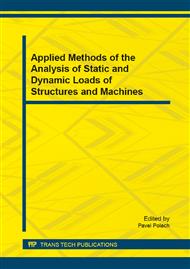p.381
p.385
p.389
p.393
p.397
p.403
p.407
p.411
p.417
Experimental Study of Primary Lining Tunnel Concrete after Thirty Years of Operation
Abstract:
This article shows the acquisition and testing of concrete from tunnel primary lining. The main objective of this article was to describe the mechanical properties of primary lining tunnel concrete at higher age. The primary lining was made from dry mixture sprayed concrete. The primary lining concrete was in contact with the surrounding rock continuously. The surrounding rock could be dry or with ground water. Some surrounding rocks could produce a highly aggressive environment for concrete. The question was, whether the sprayed concrete is still in service after 30 years in this environment.
Info:
Periodical:
Pages:
403-406
Citation:
Online since:
February 2015
Authors:
Keywords:
Price:
Сopyright:
© 2015 Trans Tech Publications Ltd. All Rights Reserved
Share:
Citation:


